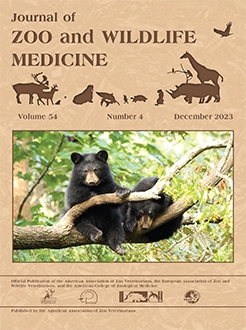Campylobacter hyointestinalis was initially isolated from an asymptomatic black howler monkey (Alouatta caraya) in a routine fecal culture examination. Fecal cultures from other individuals in this group and an adjacently housed black-headed spider monkey (Ateles fusciceps robustus) group recovered C. hyointestinalis from all but one of the individuals sampled (1.1 spider monkeys and 2.1 howler monkeys). Concurrently, one spider monkey presented with acute onset severe rectal prolapse and diarrhea. Whole-genome sequencing results of C. hyointestinalis isolates from all individuals were homologous and closely related to Campylobacter hyointestinalis subsp. hyointestinalis TTU_618, a strain typically associated with environmental samples. In addition, two cytolethal distending toxin (CDT) expressing gene clusters, cdt-I and cdt-II, were identified in all isolates. These results suggest C. hyointestinalis is transmissible to both howler monkeys and spider monkeys, though the origin of infection and whether it is transmissible between these species is undetermined.
How to translate text using browser tools
9 January 2024
CAMPYLOBACTER HYOINTESTINALIS ISOLATION FROM HOWLER (ALOUATTA CARAYA) AND SPIDER MONKEYS (ATELES FUSCICEPS ROBUSTUS) AT A ZOOLOGIC FACILITY IN CENTRAL ILLINOIS
Siobhan N. A. Meadows,
Chien-Che Hung,
Jenn-Wei Chen,
Samantha Soukup,
Samantha J. Sander
ACCESS THE FULL ARTICLE





